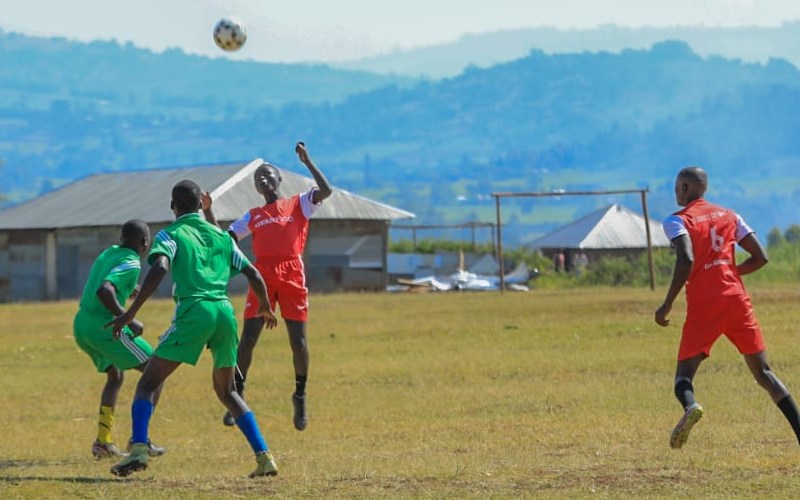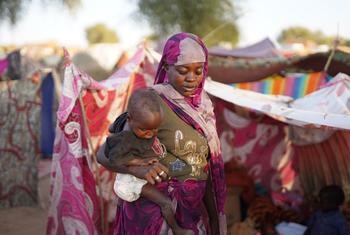Ministry of Health warns public on Marburg Virus risks amid regional outbreak

Symptoms include severe cramping, bleeding after 5-6 days, and, in untreated cases, death within 9-10 days.
The Ministry of Health has issued a public alert regarding the Marburg virus, following confirmed cases in neighbouring Tanzania. The warning emphasises the need for vigilance and preventive action due to the virus’s severe impact and lack of approved treatments.
During a weekly media briefing, Director General Patrick Amoth highlighted the seriousness of the virus, which is closely related to Ebola and capable of causing devastating outbreaks.
More To Read
- Somalia on high alert as Marburg virus outbreak hits neighbouring Ethiopia
- Kenya steps up border checks as Ethiopia confirms outbreak of Marburg Virus Disease
- Kenya issues nationwide alert after Marburg virus detected in Ethiopia
- South Sudan on high alert as Marburg outbreak emerges across border in Ethiopia
- Ethiopia confirms Marburg virus disease outbreak, nine cases reported so far
- Ethiopia probes suspected viral haemorrhagic fever outbreak in Southern Region
Bats transmit the Marburg virus to humans, particularly miners and hikers, through direct contact between individuals. Symptoms include severe cramping, bleeding after 5-6 days, and, in untreated cases, death within 9-10 days.
The ministry assured the public that surveillance and screening efforts are ongoing, with diagnostic capacities ready to detect and manage any potential cases. “We remain on high alert and have implemented infection prevention and control measures, including protocols for safe and dignified burials where necessary,” stated Amoth.
Preventive measures remain the cornerstone of control efforts. The public is urged to maintain high standards of personal hygiene, avoid contact with bats and infected individuals, and promptly report any symptoms to healthcare facilities.
“Outbreaks begin and end with communities. By raising awareness and taking preventive action, we can effectively limit the spread of this deadly virus,” Amoth said, stressing the critical role of community mobilisation in combating health threats.
The Ministry is using the lessons learnt from the COVID-19 pandemic to prepare for any potential outbreak, despite the lack of cases reported in Kenya.
Marburg virus disease has an incubation period of 2 to 21 days, with symptoms beginning abruptly. Early signs include high fever, severe headache, malaise, and muscle pain.
By the third day, severe diarrhoea, abdominal pain, nausea, and vomiting may occur, often accompanied by a non-itchy rash in the first week. Severe cases may progress to bleeding, confusion, and organ damage, with fatalities usually resulting from shock and blood loss between days 8 and 9.
Prevention focuses on reducing bat-to-human transmission by avoiding fruit bat habitats and ensuring thorough cooking of animal products. Isolating infected patients, avoiding contact with body fluids, and maintaining good hygiene can minimise human-to-human transmission. Community awareness, safe burials, and the monitoring of close contacts are vital to containing outbreaks.
The World Health Organisation notes that Marburg virus disease has an average fatality rate of 50%, with variations ranging between 24% and 88% in past outbreaks. Early care, such as rehydration and symptom management, improves survival. Although there are no approved vaccines or treatments yet, several are under development.
Significant outbreaks include:
- Germany and Yugoslavia (1967): 31 cases, 7 deaths.
- Democratic Republic of the Congo (1998-2000): 154 cases, 128 deaths.
- Angola (2004-2005): The largest outbreak with 252 cases and 227 deaths.
- Uganda (2007, 2012, 2014, 2017): Multiple small outbreaks.
- Ghana (2022): 2 cases, both fatal.
- Equatorial Guinea and Tanzania (2023): Ongoing investigations.
With fatality rates reaching up to 88% in some outbreaks, the Marburg virus remains a serious public health concern requiring global vigilance and coordinated response efforts.
Tanzania has reported one case, while tests conducted on 24 other suspected cases came back clear. The cause of eight deaths previously reported by the WHO remains undetermined.
Tanzania experienced its first Marburg outbreak in March 2023, in the Bukoba district. The outbreak lasted nearly two months and claimed six lives.
Top Stories Today










































